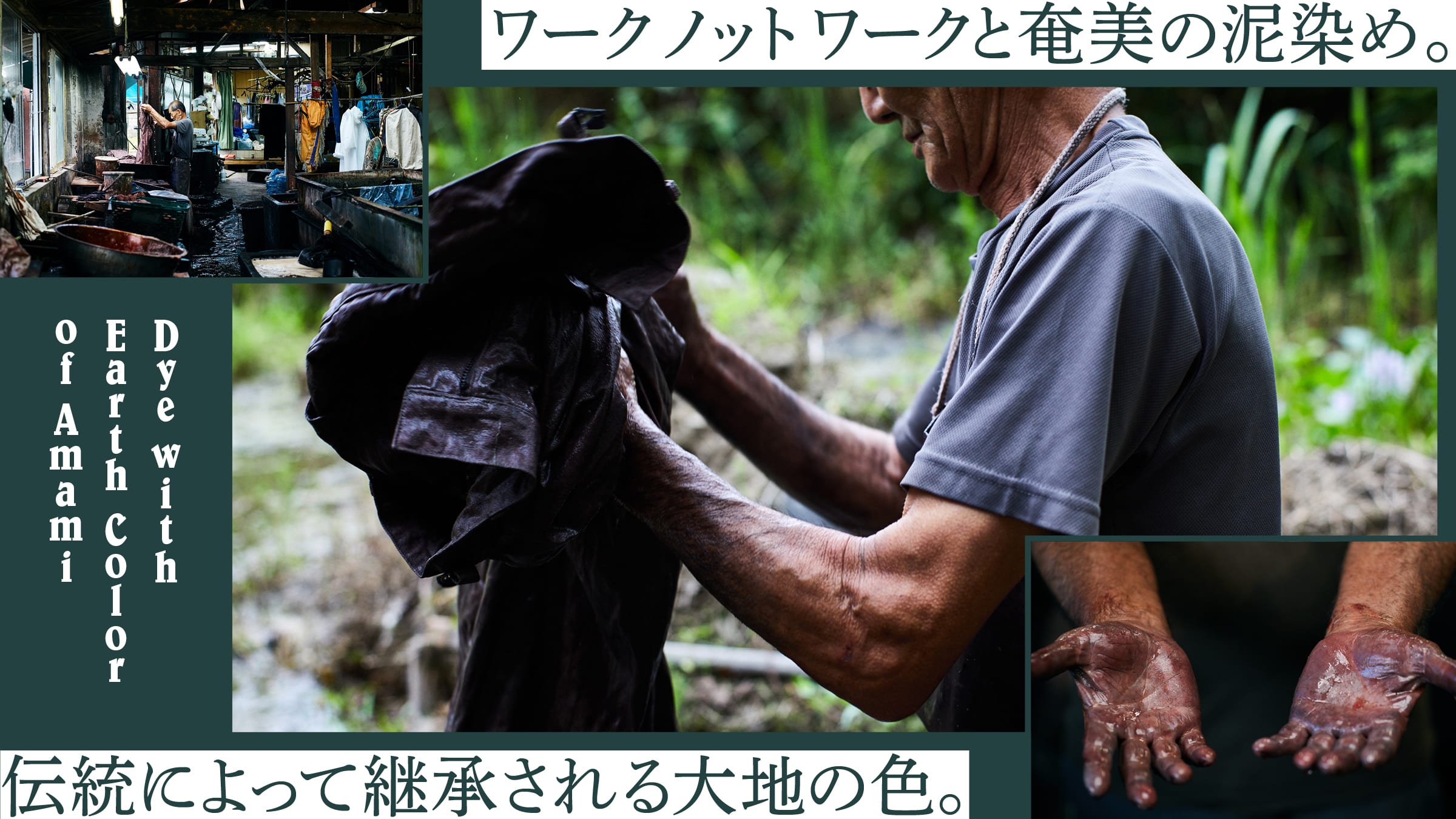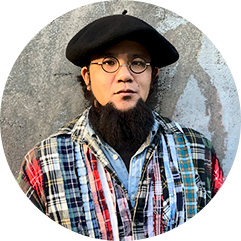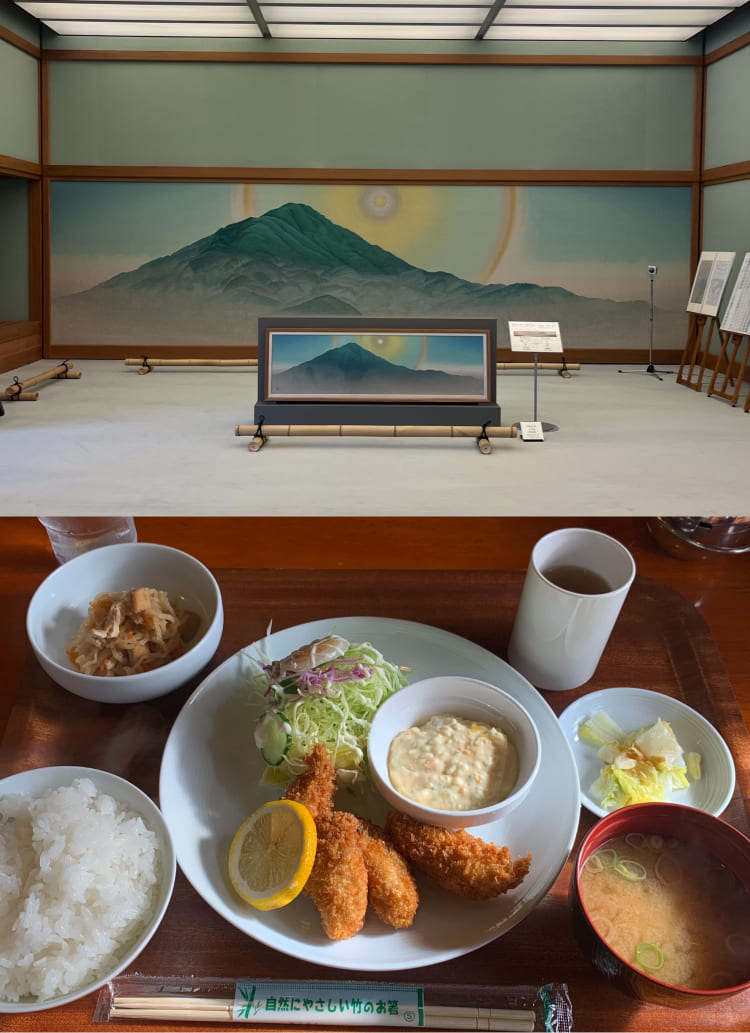It has existed for 1,300 years.
Traditional craft of Amami, Oshima tsumugi (pongee) dyed in mud.


Amami Oshima Island is located about 2 hours by plane from Tokyo. The island features rich natural scenery, including virgin mangrove forests.
Amami Oshima Island , the southernmost island of Kagoshima Prefecture, is surrounded by a warm and mild climate, vigorous vegetation, and a beautiful ocean. The rich nature and the slow air peculiar to the tropics relaxes the body and mind, and lightens your step.

The workshop is located in a perfect place for mud dyeing, with a mountain behind "Higo Dyeing" and a river flowing nearby.
The scenery near the airport is peaceful and tranquil, and the lack of tall buildings gives the illusion of being able to reach the clouds in the sky. After arriving at Amami Oshima, we headed for Ryugo Town, located in the northern part of the island. Our destination was a mud-dyeing workshop called "Higo Dyeing" in this town.

Oshima tsumugi is dyed with mud from the silk threads. As shown in the photo, the beautiful black color is produced after the dyeing process is repeated dozens of times.
Mud-dyeing, which Work Not Work spotlighted this time, is a traditional handicraft of this island, and the beautiful brownish-brown color of Oshima silk, known as one of the world's three major textiles, is also a result of this mud-dyeing process. It is not known exactly when the mud-dyeing originated, but Oshima tsumugi has existed for at least 1,300 years. Since then, generations have been passing down the tradition to the present day.

Oyakata also holds a national certification as a traditional craftsman. . He is a craftsman-like person who works silently without saying much.
. This place started in 1973. My father ran it for almost 10 years, and then my brothers and I took it over.
." says Eiki Higo, the master of the workshop. Higo Dyeing is currently run by Eiki, his younger brother Junichi, and his daughter-in-law Takahiro Yamamoto. In addition to dyeing Oshima tsumugi silk, the workshop also handles orders from various apparel makers , and invites tourists to experience mud dyeing.

Eiki's younger brother, Junichi, also stands in the workshop. He was affectionately known by everyone as "Junani. He has a friendly and cheerful personality.

. This is the silk thread used for Oshima silk. Careful work is required because if the color is dyed to a color that does not meet the standard, the entire process is nullified.
When the production of Oshima silk was prosperous in Amami, there must have been about 80 workshops on the island. But gradually it became impossible to make a living by that alone, and now we and a few other companies are the only ones doing full-scale mud-dyeing. Even so, it is difficult for us to do this kind of work in cooperation with apparel brands, as we are doing this time.
It may be easy to talk about, but I am sure that it was a big decision to apply the historic traditional technique that has been used only for Oshima silk to another type of clothing. However, it can be said that it is precisely because of this change of course that we can now enjoy mud-dyeing in a more familiar way.

Mr. Yoshida of "Work Not Work" accompanied me for the interview.
As MD, he is at the helm of the brand. This time, he also experienced mud dyeing.
This is the first time "Work Not Work" has decided to produce mud-dyed products. We were simply attracted to the color," said Mr. Yoshida, the brand's MD.
A manufacturer introduced me to Higo Dyeing, and we made indigo-dyed products last season. I was told that they could do mud-dyeing as well, and when they gave me a sample, the finished product was amazing. I talked with the director of the brand, and we decided to make mud-dyed products.









